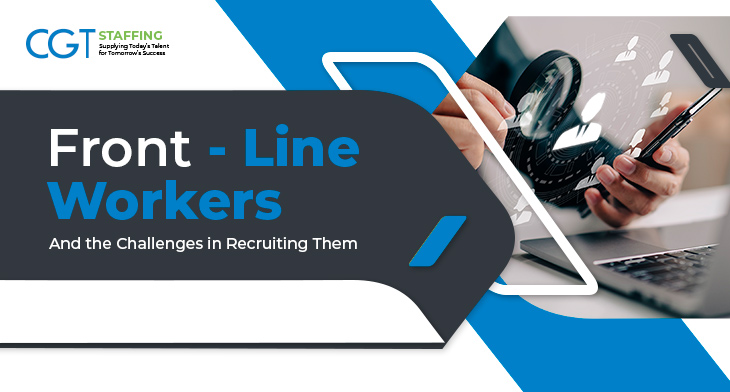The frontline workforce is essential across multiple industries and business models. From healthcare professionals to manufacturing and assembly line workers to retail staff, frontline workers offer critical support to business operations. However, given the disruption in recent years, businesses are finding it harder to hire new frontline workers.
In fact, many are finding it harder to retain them as well. Trends like The Great Resignation are still disrupting the labor market, undermining the success of different recruitment models and workforce retention efforts. Businesses may need to adapt their hiring strategies in order to overcome new challenges when sourcing crucial frontline talent.
This blog explores some of the most significant challenges and obstacles when recruiting frontline employees. Read on to discover more.
Table of Contents
The Challenges in Hiring Frontline Workers
During the pandemic, especially in key industry sectors like hospitality and retail, the frontline worker demographic saw significant layoffs. However, following a period of revival, the need for frontline workers has once again risen sharply. This, in turn, has led to a labor shortage, as businesses seek to expedite their recovery by hiring frontline employees through large-volume recruitment drives. At the same time, there are factors driving significant changes in behavior in the labor market.
Unless businesses are working with experienced recruiters and local third-party recruiters, they may soon find themselves facing a talent shortage. Remedies like partnering with the best staffing agency in Pittsburgh can help a business meet these talent needs, but they will still need to gain a deeper understanding of the challenges facing them in order to make meaningful progress amid their competition.
Here are some of the most significant challenges that businesses currently face when hiring this demographic:
Gender Disparity in Frontline Workforces
One of the biggest challenges in recruiting new frontline workers is that there are fewer women currently in the workforce, especially compared to pre-pandemic levels. This not only creates a concerning gender disparity in the workforce but also implies that the overall workforce size has shrunk. Fewer women in the frontline workforce result in fewer overall workers. At a time when businesses are hiring competitively, often in the same talent pools, any dearth of available workers is a cause for concern.
Aggressive Hiring by E-Commerce Businesses
Another important obstacle when hiring frontline workers in the current labor market is the requisite adoption of aggressive hiring practices. E-commerce, in particular, is experiencing an increased need for frontline workers. That industry experienced massive growth during the pandemic, as online transactions were safer than in-person ones. Even as the pandemic is winding down, more consumers than ever rely on online buying.
As a result of this transition in buying habits, e-commerce businesses need larger workforces to handle and process the increased order volumes. With employers hiring aggressively and in greater volumes, other businesses may find it harder to retain their existing frontline talent.
Doubts About Workplace Health and Safety
Thanks to the presence of vaccines and increased awareness of prevention, the risks of Covid-19 infections are much lower, but many frontline workers are still wary of returning to the workplace. The pandemic may have slowed down, but the risk of infection is still very real, and, quite rightly, so are the fears and uncertainties of frontline workers. After all, with the increased contact they have with their coworkers, they are often the most at risk in terms of contracting a contagious illness.
Changing Behavior and New Trends in Labor Markets
All industries, from financial service providers to mortgage staffing agencies, have experienced numerous changes and shifts in the global labor market. Trends like the Great Resignation, for example, show that employees are more concerned about the quality of their life and work-life balance than ever before.
At the same time, Baby Boomers are exiting the labor market, while the proportion of Millennial and Gen Z workers continues to grow. These younger demographics have very different work ethics, attitudes, and motivators. Similarly, they have very different expectations relative to compensation, benefits, and acceptable workplace culture.
Depending on the circumstances, they might also be more prone to insubordination at work and quick to tender resignations when their expectations go unmet.
Conclusion
Employers need to recognize that the frontline workforce in particular, and labor markets in general, are very different today than in the recent past. Outdated hiring and onboarding techniques may no longer prove effective; instead, firms need to invest time in understanding the underlying challenges. With the right insights, they can make meaningful changes to overcome them and address a growing talent shortage.
